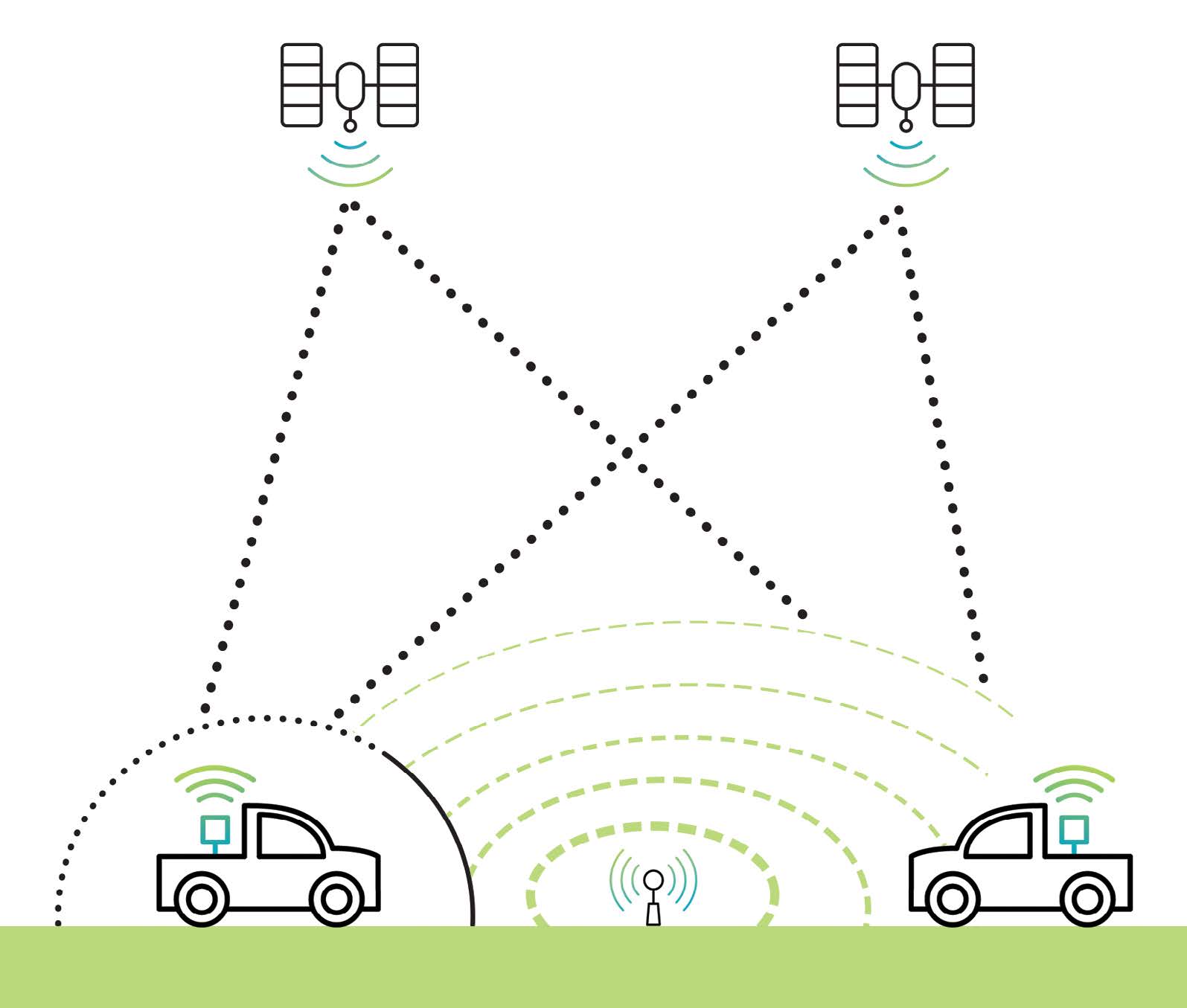AGRICULTURE
By the time GNSS signals arrive at the antennas of a GNSS positioning system, the power level of these signals is very low (nearly 1 quintillion times weaker than a typical light bulb). This low power level makes the signals susceptible to interference from other signals transmitted in the GNSS frequency range. If the interfering signal is sufficiently powerful, it becomes impossible for the receiver to detect the low-power GNSS signal.
If the signal is from an unintentional source, it is generally called interference. There have been many documented cases of unintentional interference over the years, ranging from faulty TV receivers to other non-GNSS transmitting sources leaking into the GNSS frequency bands.
Jamming occurs when a signal is broadcast within the GNSS band with the intention to overwhelm GNSS signals and prevent receivers in the area from providing PNT data. Hostile entities may try to jam GNSS signals in a local area or region for a number of reasons, with the ultimate intent to make GNSS signals unusable. Although illegal in most jurisdictions, very low-power jammers known as “personal privacy devices” can be bought on the Internet and used for this purpose. One simple, lowpower jammer can overpower GNSS signals within a large geographic area, denying a position solution and timing.
Another version of interference (the above is in-band interference) is bandadjacent. Some jammers use high-powered transmitters to overwhelm the bands adjacent to GNSS bands and compromise a receiver's ability to receive GNSS signals.
GNSS receivers can use several methods to protect against interference and jamming.
The first line of defence for interference in any radio frequency (RF) system is to filter out as much of the interference as possible. High-quality GNSS antennas provide the first layer of filtering as they are designed to increase the signal gain in the GNSS band and attenuate signals that are outof- band. GNSS receivers also have filters that reduce the signal power of out-of-band signals which helps against band-adjecent jamming. Some advanced GNSS receivers include tools that detect interfering signals and create filters that can reduce both in-band and out-of-band interference.
For short-term interference, additional navigation sensors, such as Inertial Measurement Units (IMUs), odometers or altimeters, can help the receiver bridge brief periods of GNSS outage. A discussion of systems that use GNSS receivers and IMUs, called GNSS+Inertial Navigation Systems (INS), is presented in Chapter 6.
Multi-frequency receivers also provide a means of protecting against interference. For example, if interference in the L1 frequency band around 1575 MHz is completely jamming GPS L1, GLONASS L1, Galileo E1 and BeiDou B1, it is usually possible to continue calculating a positioning, navigation and timing (PNT) solution using GPS L2 and GLONASS L2 around 1227 MHz or GPS L5, Galileo E5a and BeiDou B2a around 1176 MHz.
Additionally, some of the newer and faster civilian signals such as GPS L5, Galileo E5a and Galileo E5b provide some improvement in interference performance.
Encrypted signals (such as the Y-code and M-code signals on GPS L1 and L2) broadcast by several of the GNSS constellations provide significant additional resistance to interference and jamming.
A description of GNSS signals is given in Chapter 3.
Anti-jam antenna systems, comprising Controlled Reception Pattern Antennas (CRPAs) and sophisticated electronics, use multiple antenna elements to control the amount of signal received from a particular direction. When an anti-jam system senses interference from one direction, it turns down the antenna gain, thereby reducing the received signal power for that direction. This process reduces the amount of interference received so that legitimate GNSS signals can be received from other directions.
Figure 51 shows two vehicles in range of a GNSS jammer. The vehicle on the right has a standard antenna, and the GNSS signals are overpowered by the jammer. The vehicle on the left has an anti-jam antenna that blocks the jamming signal so GNSS signals can be received.
